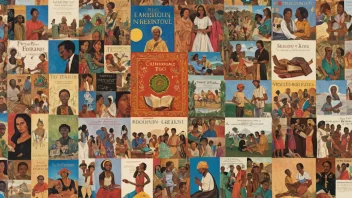In an increasingly globalized world, understanding consumer behavior has become a crucial aspect of business strategy and marketing. Cultural studies, an interdisciplinary field that examines the social, political, and economic contexts of culture, offers valuable insights into how culture shapes consumer preferences and behaviors. This article explores the intersection of cultural studies and consumer behavior, highlighting key theories, methodologies, and case studies that illustrate the profound impact of culture on consumption patterns.
Understanding Cultural Studies
Cultural studies emerged in the mid-20th century as a response to traditional academic disciplines that often overlooked the complexities of culture in everyday life. It draws from various fields, including sociology, anthropology, media studies, and literary criticism, to analyze how cultural practices and artifacts influence social relations and individual identities. At its core, cultural studies seeks to understand how power dynamics shape cultural meanings and how these meanings affect consumer behavior.
Key Theoretical Frameworks
Several theoretical frameworks within cultural studies can help elucidate consumer behavior:
- Encoding/Decoding Model: Proposed by Stuart Hall, this model suggests that media messages are encoded with meanings by their producers and decoded by audiences in diverse ways. This framework is essential for understanding how advertisements and branding resonate differently across cultural contexts.
- Cultural Capital: Pierre Bourdieu's concept of cultural capital emphasizes the role of cultural knowledge, skills, and education in shaping consumer preferences. Consumers with higher cultural capital often have distinct tastes and consumption patterns, influencing market trends.
- Consumer Culture Theory (CCT): CCT focuses on understanding consumption not just as an economic activity but as a cultural phenomenon. It examines how identity, social class, and cultural narratives influence consumer behavior.
The Role of Culture in Consumer Decision-Making
Culture profoundly influences consumer decision-making processes. From the initial recognition of a need to the final purchase, cultural factors can shape every stage. Here are some ways in which culture impacts consumer behavior:
1. Values and Beliefs
Cultural values and beliefs serve as guiding principles for consumers. For instance, in collectivist cultures, consumers may prioritize group harmony and social approval over individual preferences. This can lead to different purchasing decisions compared to individualistic cultures, where personal expression and uniqueness are highly valued.
2. Social Norms
Social norms dictate acceptable behaviors within a culture, influencing consumer choices. For example, in some cultures, there may be a strong norm against conspicuous consumption, leading consumers to favor subtle and understated products. Marketers must be aware of these norms to tailor their strategies effectively.
3. Symbols and Meanings
Products often carry symbolic meanings that vary across cultures. A luxury brand may signify status in one culture while being perceived as ostentatious in another. Understanding these symbols allows marketers to position their products appropriately in different cultural contexts.
Case Studies: Cultural Influences on Consumer Behavior
To illustrate the impact of cultural studies on understanding consumer behavior, let’s examine a few case studies from different industries:
1. Fashion Industry
The fashion industry is a prime example of how cultural studies inform consumer behavior. Brands like Gucci and Louis Vuitton leverage cultural symbols and narratives to create desirability. In markets like Japan, where fashion is closely tied to cultural identity, brands often collaborate with local designers to resonate with consumers. This cultural sensitivity not only enhances brand loyalty but also drives sales.
2. Food and Beverage
Cultural preferences significantly influence food and beverage consumption. For example, McDonald’s adapts its menu to local tastes, offering items like the McAloo Tikki in India or the Teriyaki Burger in Japan. These adaptations reflect an understanding of local cultural preferences, leading to greater acceptance and success in diverse markets.
3. Technology Adoption
The adoption of technology products can also be shaped by cultural factors. Research has shown that in cultures with high uncertainty avoidance, consumers may be more hesitant to adopt new technologies. Understanding these cultural dimensions can help tech companies tailor their marketing strategies to encourage adoption.
Methodologies in Cultural Studies and Consumer Research
Researchers employ various methodologies to study the intersection of culture and consumer behavior:
1. Ethnography
Ethnographic research involves immersive observation and participation in consumers' daily lives. This approach allows researchers to gain deep insights into cultural practices and consumer motivations. For instance, studying how different cultures celebrate holidays can reveal unique consumption patterns associated with those events.
2. Surveys and Interviews
Surveys and interviews can provide quantitative and qualitative data on consumer preferences and cultural influences. By asking targeted questions about cultural values and consumption habits, researchers can identify trends and correlations.
3. Content Analysis
Analyzing advertisements, media representations, and consumer-generated content can reveal how culture shapes brand perceptions and consumer behavior. This method helps researchers understand the cultural narratives that brands communicate and how these narratives are received by consumers.
Implications for Marketers and Businesses
Understanding the impact of cultural studies on consumer behavior has significant implications for marketers and businesses:
1. Tailored Marketing Strategies
Marketers must develop strategies that resonate with specific cultural contexts. This may involve localized advertising, product adaptations, and culturally relevant messaging. A one-size-fits-all approach is often ineffective in diverse markets.
2. Building Cultural Competence
Businesses should invest in building cultural competence within their teams. This includes training employees to understand and appreciate cultural differences, which can enhance customer relations and improve marketing effectiveness.
3. Engaging with Consumers
Engaging with consumers through culturally relevant content can foster brand loyalty. Companies that actively participate in cultural conversations and support community initiatives can strengthen their connections with consumers.
Conclusion
The intersection of cultural studies and consumer behavior provides a rich framework for understanding the complexities of consumption in a globalized world. By examining how cultural values, symbols, and social norms influence consumer decisions, businesses can develop more effective marketing strategies that resonate with diverse audiences. As the landscape of consumer behavior continues to evolve, integrating cultural insights will be essential for success in the marketplace.






